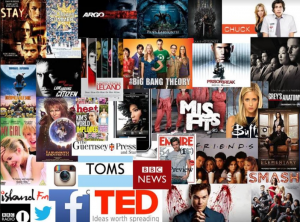The Design Elements of a Magazine Cover
You need to learn the TERMINOLOGY to describe EXAMPLES of print design. You need these terms to:
- ANALYSE professional examples
- Make your own (professional looking) version.
Here is a film magazine with the main design elements labelled.
TASK:
Complete a textual analysis of the design elements of this magazine front page:
Use an A3 sheet you have been given with a copy of the cover of Kerrang on it and in pairs, you can annotate it ‘beautifully’ following instructions 2 and 3 below:
- Identify (name) the design elements using the correct term for the labelled (examples).
- Analyse the ideas (meaning) or the functional reason behind that design element/feature and what they are seeking to communicate to the audience.


